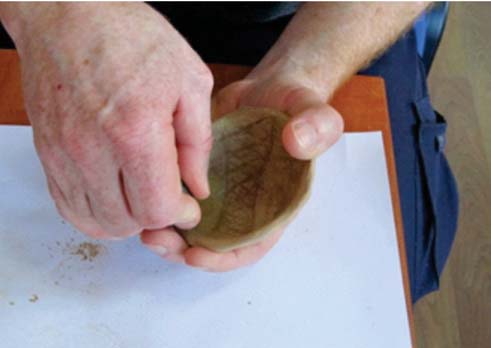USE OF MACRO - LITHICS IN THE POTTERY PRODUCTION DURING THE LATE NEOLITHIC OF THE CENTRAL BALKANS
Keywords:
archaeology, prehistoric skills, macro-lithic tools, shells, boar task, polishers, smoothers, experiments, potteryAbstract
Data on the implementation of macro-lithic tools in pottery production during the Late Neolithic of the central Balkans are very rare. This paper presents experiments in smoothing, polishing pottery surface in order to examine several topics. Fourteen vessels were made of various tempered clay and different moisture levels. Their surfaces were processed by smoothers made of shells and the experimentally made stone axe. Polishing has been performed by pebbles and a boar task. The experimental tests resulted in a comparative collection of micro-wear traces considering the objects originating from an archaeological context. This can reveal pottery workshops and possible technological varieties in pottery production within the settlement or between settlements. At the same time, it has been documented that types of use-wear traces on stone polishers appeared and developed in various time, depending on pottery temper. Observations also show a correlation between the productivity and morphology of stone polishers, the shape of the vessels and decoration. It has been also concluded that to the working effi ciency of the implemented artefacts made of various materials such as stone and the boar tusk depends on technology implemented in pottery production. These experiments can assist in completing an economic picture of the Neolithic settlements on the Central Balkans. It encourages further examinations of wear resistance, mechanical property, effi ciency of the pottery smoothers and polishers made of various materials such as stone, bone and shells.
References
Delgado – Raack, S., 2008. Practicas econimcas y gestion social de recursos (Macro) lithicos en la Prehistoria reciente (III – I milenios AC) del Mediteraneo occidental, Departament de Prehistòria Facultat de Lletres Universitat Autònoma de Barcelona. Unpublishd PhD thesis. Barcelona
Delgado-Raack, S. Go´mez-Gras, D., Risch, R. 2009. The mechanical properties of macrolithic artifacts: a methodological background for functional analysis. Journal of Archaeological Science, (36), 1823–1831.
Greenfi eld H. 1994. Faunal Remains from the Early Neolithic Starčevo Settlement at Bukovačka Česma. Starinar, (43 – 44), 103–113.
Hampton, W. O. 1999. Culture of Stone, Sacred and Profane Uses of Stone among the Dani. Anthropology Series. College Station: Texas A&M University Press. pp. 246, 247, 272.
Lazić, M. 1988. Fauna of Mammles from the Neolithic settlement in Serbia. In Srejović, D. (ed) The Neolithic of Serbia. Belgrade, 24−39.
Милосављевић, М. 1976. Развој грнчарског заната и израда глиненог посуђа на подручију северног Баната. Гласник Етнографског музеја, 39/40, 85−117.
Schiffer, M. B., Skibo, J. M., Boelke, T. C., Neupert, M. A. and Aronson, M. 1994. New perspectives on experimental archaeology: surface treatments and thermal response of the clay cooking pot. American Antiquity, 59(2), 197–217.
Strouli, A. 2003. Ground stone celts from Franchthi cave. Hesperia, 72(1), 1−30 .
Valado, T. 2008. Identifying Lightly Used Polishing Stones: Experiments and Implication. In Rowan Y.M., Jennie R.E. (eds.) New Approaches to Old Stones, Recent Studies of Ground Stone Artefacts. London, 173−181.
Vuković, J. 2003. Pottery sherd as tools in late Neolithic Vinča, Starinar, 63, 191−207.
Zlatunić, R. 2005. The development of clay; technology an minereralogy of ceramics. Histria archaeologica, 36, 61−114.

Downloads
Published
How to Cite
Issue
Section
License
Copyright (c) 2020 Vesna Vučković

This work is licensed under a Creative Commons Attribution-NonCommercial 4.0 International License.







